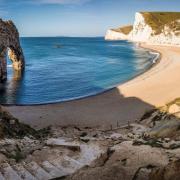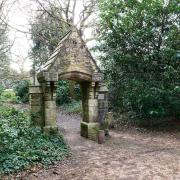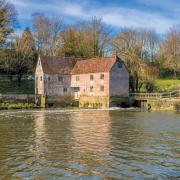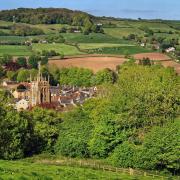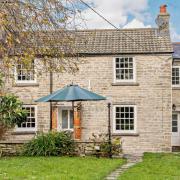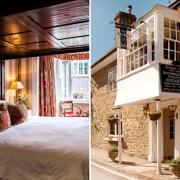Wimborne Minster...past
Wimborne had long owed its fortunes to its position between two rivers, the Stour and Allen, making it a road hub and trading post between the coast and its neighbouring inland towns. To these was now added the railway. The driving force for an east/west line linking Southampton to Dorchester was a Wimborne solicitor, Charles Castleman, who could see the benefits it would bring the town. Wimborne Station was the first to open in Dorset (in 1847) and for the next 40 years it remained a major railway junction and depot, through which all trains going north/south, as well as along the coast, had to pass.
With London now only four hours away, Wimborne attracted what one guide book called, ‘the attentions of the better classes of society.’ From the gardens of the detached newly built villas that lined Rowlands Hill ‘retired officers on half pay, clergymen, and the professional classes generally’ could look down on the travellers still encamped on Leigh Common. New streets sprung up round the railway station, in one of whose redbrick terraced houses Thomas Hardy and his first wife spent two years from 1881.
A poem Hardy wrote when living in Avenue Road, The Levelling Churchyard, mourns the recent tidying up of the minster churchyard and its tombstones. Such things reflected the town’s changing character. By 1880 Market Street had become the High Street, the two annual fairs had been abolished and the cattle market moved to a site near the railway station. As well as the Grammar School, there were three ‘Ladies Schools’, Mrs Foot Eli’s ‘School for Young Gentlemen’, and a National School with 200 pupils.
The railway had expanded the range of goods available in the shops lining West Borough, High and East Streets. The only street without a single shop to its name was East Borough, where a gas lamp and arched doorway led into Wimborne Workhouse.
Perhaps the biggest improvement to the life of the town was the opening of the Victoria Cottage Hospital in 1887 to commemorate Queen Victoria’s Golden Jubilee. It was built on land given by Sir John Hanham of Dean’s Court, who like the Bankes at Kingston Lacy owned substantial property in the town.

Wimborne Minster...present
Deans Court: Formerly a Saxon monastery near the Minster, this has been the Hanham family home for nearly 500 years. Explore its historic walled permaculture garden, café, lifestyle store and pop-up events. deanscourt.org
Model Town: Step back in time and browse an original 1950s diorama of over 100 real shop fronts on Wimborne’s high street in 1/10th scale at Wimborne Model Town & Gardens. wimborne-modeltown.com
Rare Library: Wimborne Minster has been at the heart of town life since 705. Here you can visit a rare chained library, established in 1686 as one of England’s first public libraries. wimborneminster.org.uk




